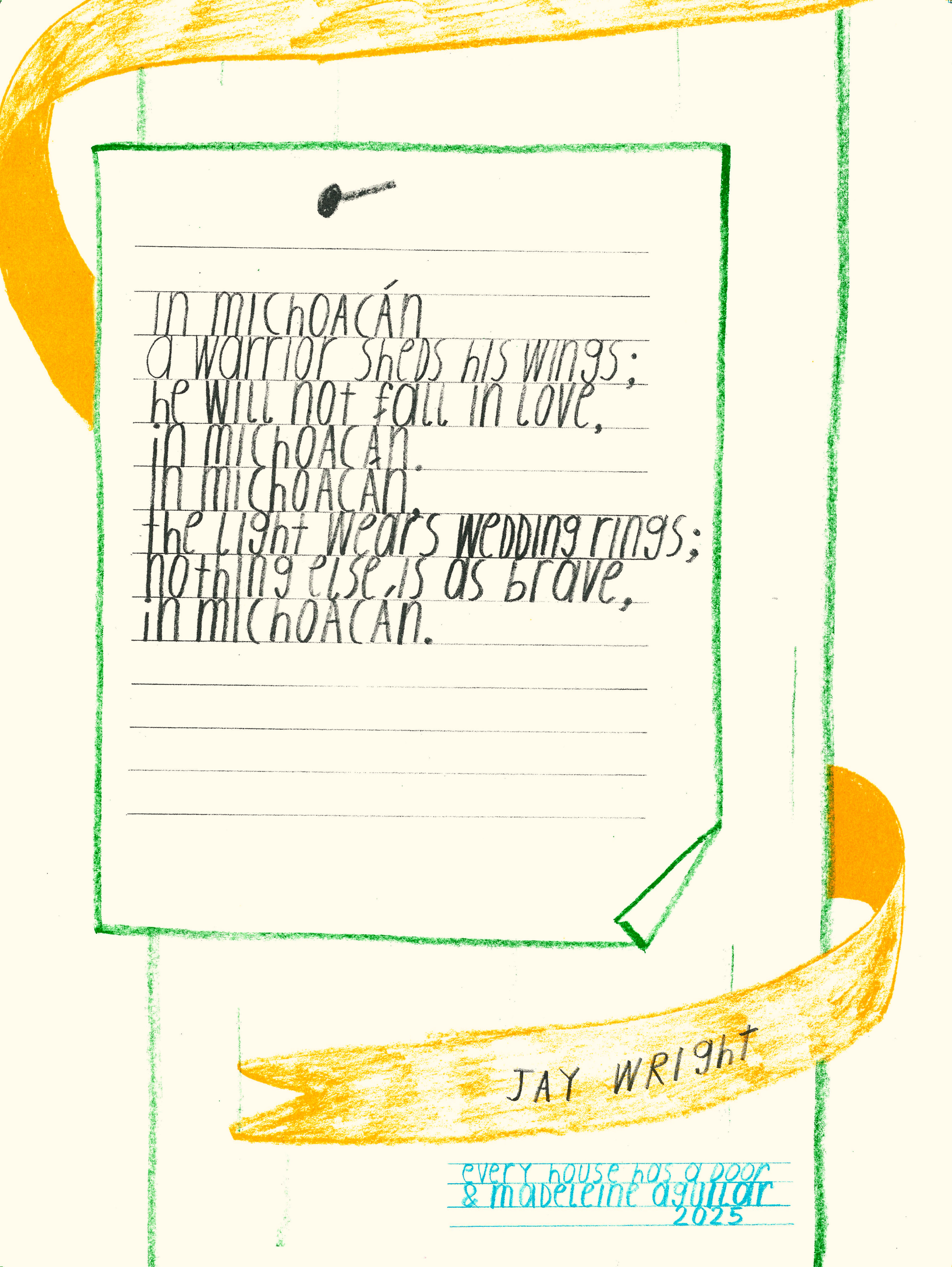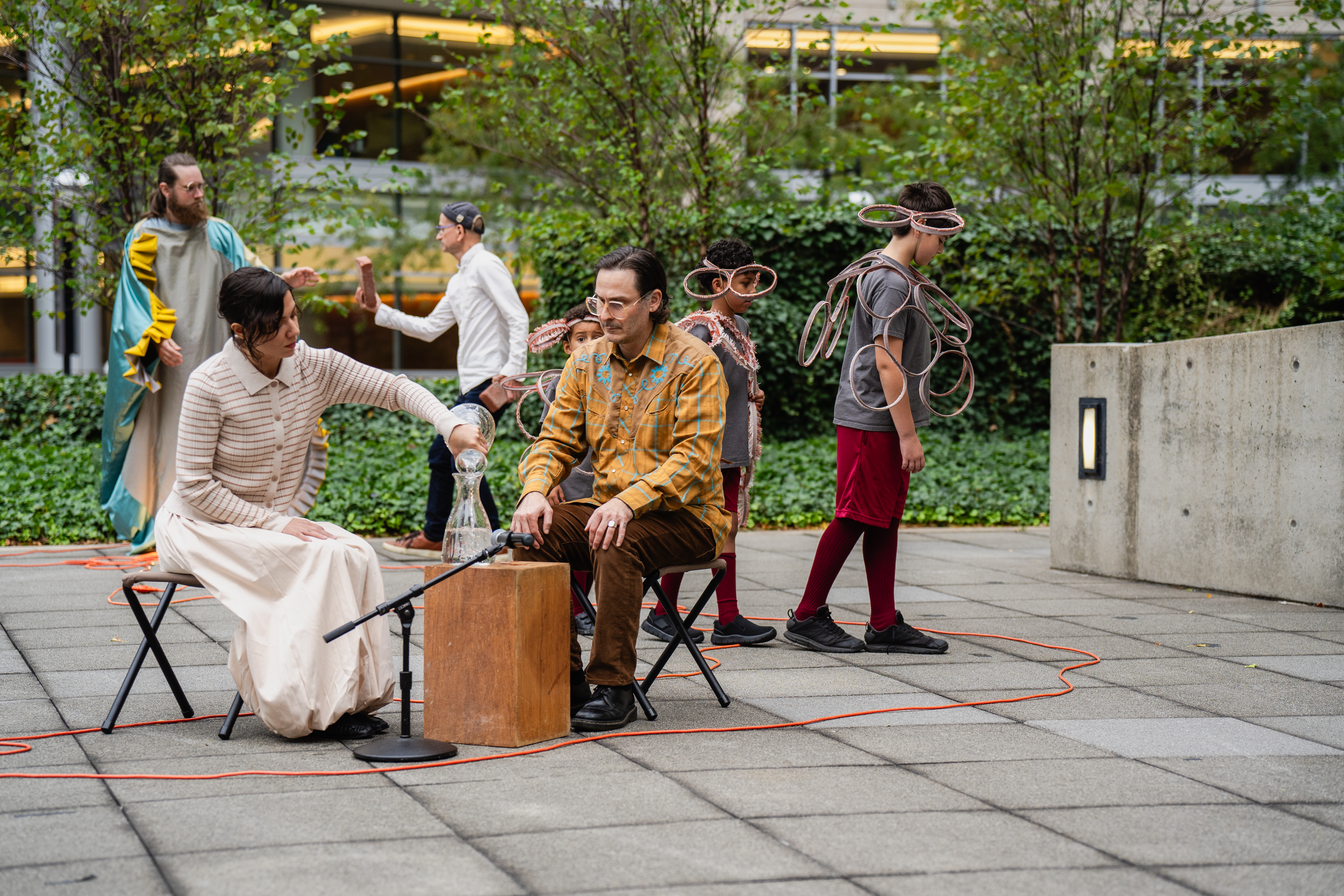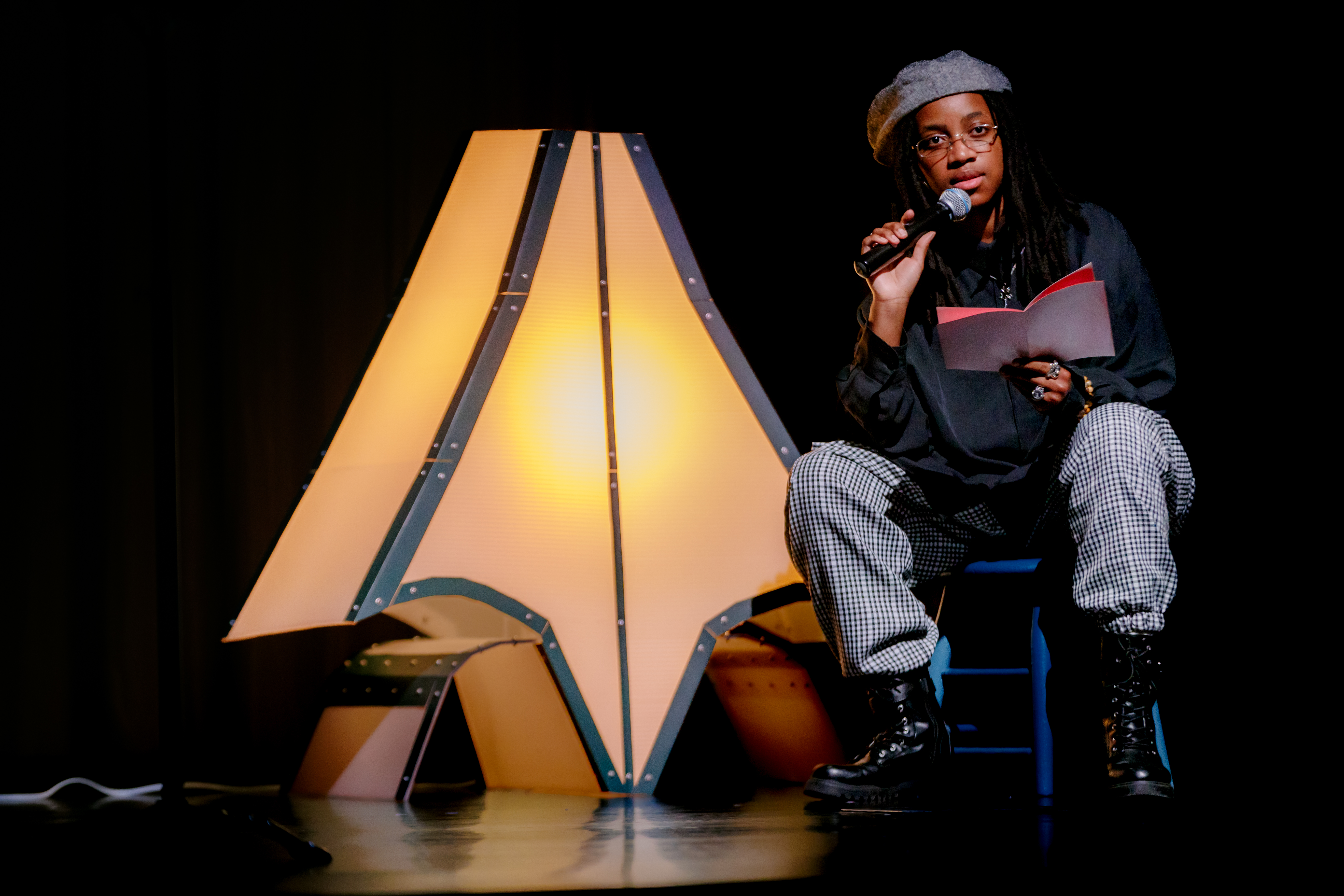Light of the invitation
Dear friends and supporters,
Every invitation unfolds beyond itself, overflowing the modest means and limits of its origin. An invitation as a manifestation of generosity can seem rare or common depending on our ability to recognize it and, once accepted, the significance of the further invitations that telescope out of it. The invitation operates unconstrained by scale. No space that embraces and protects the play of creativity, thus the bonds of sanity, is too small to matter. Every invitation puts into play a relation of reciprocity, an opportunity for all involved to exceed themselves. In difficult times when cruelty and corruption ascend, we ask ourselves daily how our actions demonstrate our beliefs. One answer is this: through the invitation.
For Every house has a door, the end of the story of an eventful year begins with an invitation. Perhaps the most quixotic of curatorial minds, our friend and colleague Jesse Malmed, has staked his claim on a streetlight on the southeast corner of the intersection of S. Western Avenue and W. Cermak Road. He has named it the Western Pole. He curates somewhat disposable works on paper by artists, and he attaches these works to the pole. Possibly the city’s most transient gallery, it has garnered a substantial reputation and following. He closed out our year by extending an invitation for Every house to join the ranks of those who have exhibited on the Western Pole.
In response we turned again to the work of the poet Jay Wright, rereading his most recent book Postage Stamps (Flood Editions, 2023), in search of any occurrence of the word “light.” It seemed the proper way to begin. We settled on an 8-line poem with this couplet.
In Michoacán,
the light wears wedding rings
Michoacán, the state in Mexico, has long commanded this poet’s lyrical attention. The Western Pole stands at the western boundary of Pilsen, the Chicago neighborhood now known for its Mexican-American population.
We then turned to a long-time collaborator, the multi-talented Madeleine Aguilar, and commissioned a risograph print setting for the poem from her venture Bench Press. When she accepted, I wrote to Jay Wright and Lois, his wife and literary manager, to ask their permission and blessing for the project. In doing so, I needed to explain “risograph” to them. “It’s an old-fashioned printing machine sort of a cross between a photocopier and silkscreen. You might find one in a church basement. The prints it makes might appear slightly blurred. Young artists have brought it back in order to explore the creative potential of its imperfections like cassette tapes for music.”

Regarding the print, we thought to make a large copy like a broadside for Jesse to affix to the pole on January 1st, 2025, and then an edition of 75 at a smaller size to distribute to Every house donors for our year-end fundraising, which this newsletter hereby announces. Donate $25 or more to receive your copy.
This project, then, offers a coda for one year and a transition into another. In 2024, we presented two major performances in Chicago. In May we staged our reading of Mina Loy’s text for an imagined ballet Crystal Pantomime at the Arts Club of Chicago in the context of their exhibition of Loy’s artwork, then a second time at Jane Addams Hull-House Museum at the University of Illinois Chicago. For this performance we commissioned the creation of an oversize lamp sculpture by Diane Simpson. In September we presented Broken Aquarium, one of the performances in our Carnival of the Animals cycle in collaboration with Finland-based Essi Kausalainen, updating it from its premier version in 2022. We added new endangered sea creatures for this staging on the outdoor terrace of the Museum of Contemporary Art. Lin and I appeared on two memorable podcasts (The Rundown and Ereignis Center). We also initiated two new projects. We will revisit the first movement in the Carnival series devoted to the lion. We have commenced a collaboration with Dusseldorf-based artist Fari Shams for a performance that assembles an indoor playground for grownups, fashioned from misused and rearranged domestic objects and furniture. This work, titled Junkology, features the father-and-son duo of performers Bryan and Jake Saner. Your donation, if you make one, and if not, your good wishes, will support the actualization of these performances.


Back to the Western Pole, Madeleine wrote about her design: “My initial thought was calling attention to place. I like when the image references the format as a way to make you more aware of something that you would usually walk right past or ignore. The handwritten text references hand-painted Mexican signage, without being too on the nose.” She devised the image of the poem handwritten on a sheet of paper pinned to a pole surrounded by a floating ribbon, all to attach to an actual pole.
When I wrote to ask Jay and Lois their permission to print the poem, I concluded this way: “This little project has taken on more meaning for us now after the grim election results, when affirmations of light and of difference have become more urgent. Our resistance will always take the form of poetry.” Lois relayed Jay’s reaction to the unlikely if not absurd invitation to place one of his poems on a lamppost on Chicago’s south side: “Hell yes!”
Now we meet the horizon of the year ahead, of unknown but anticipated catastrophes, with resolve and simple reminders. Concentrate on what you are good at. Take your own small contribution seriously. Thank those who have invited you. Invite others in return. The invitation also does this—brings into focus the communal network, resilient and durable, that sustains you, and that shows itself in darkness with its own peerless light.
Matthew Goulish, dramaturg